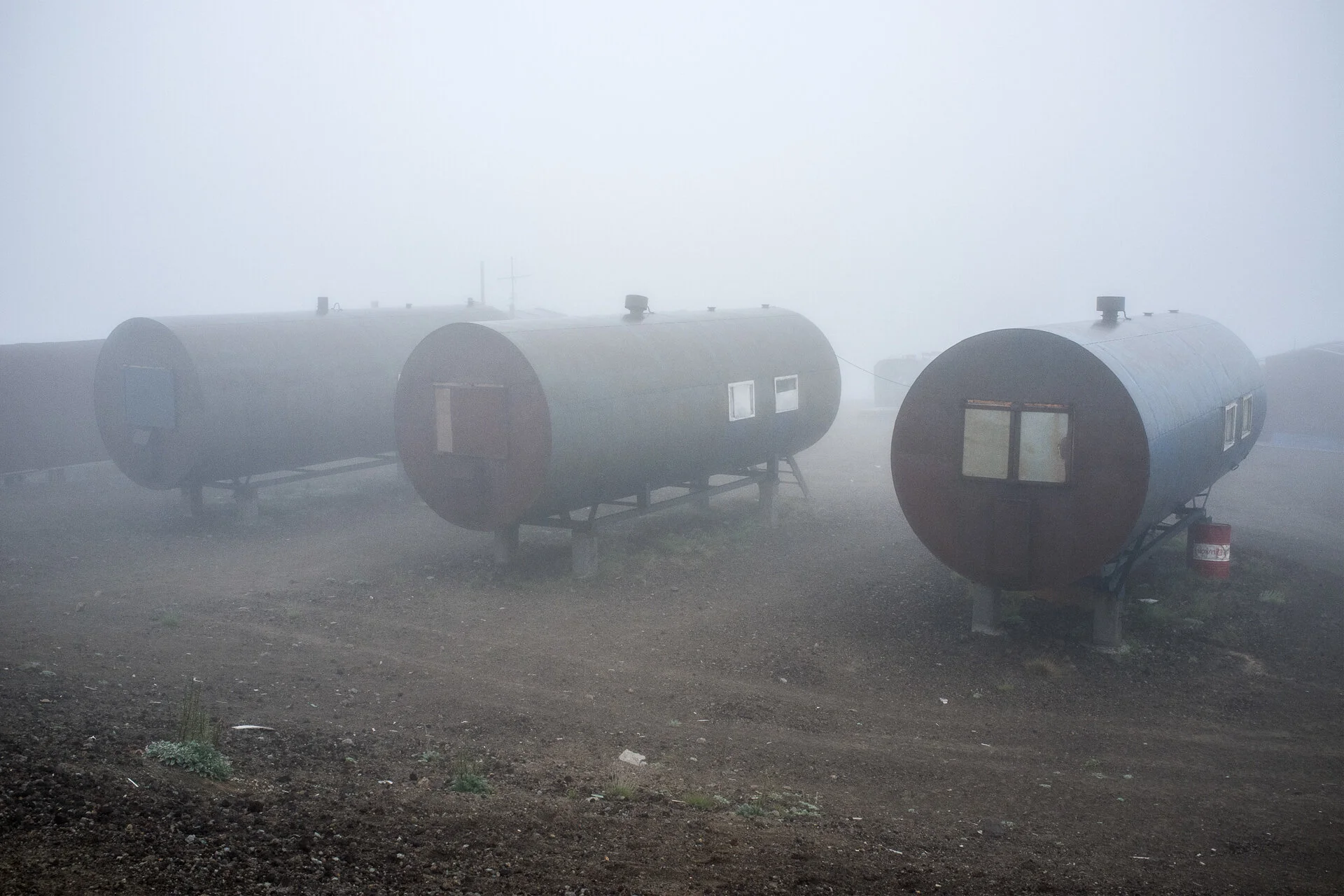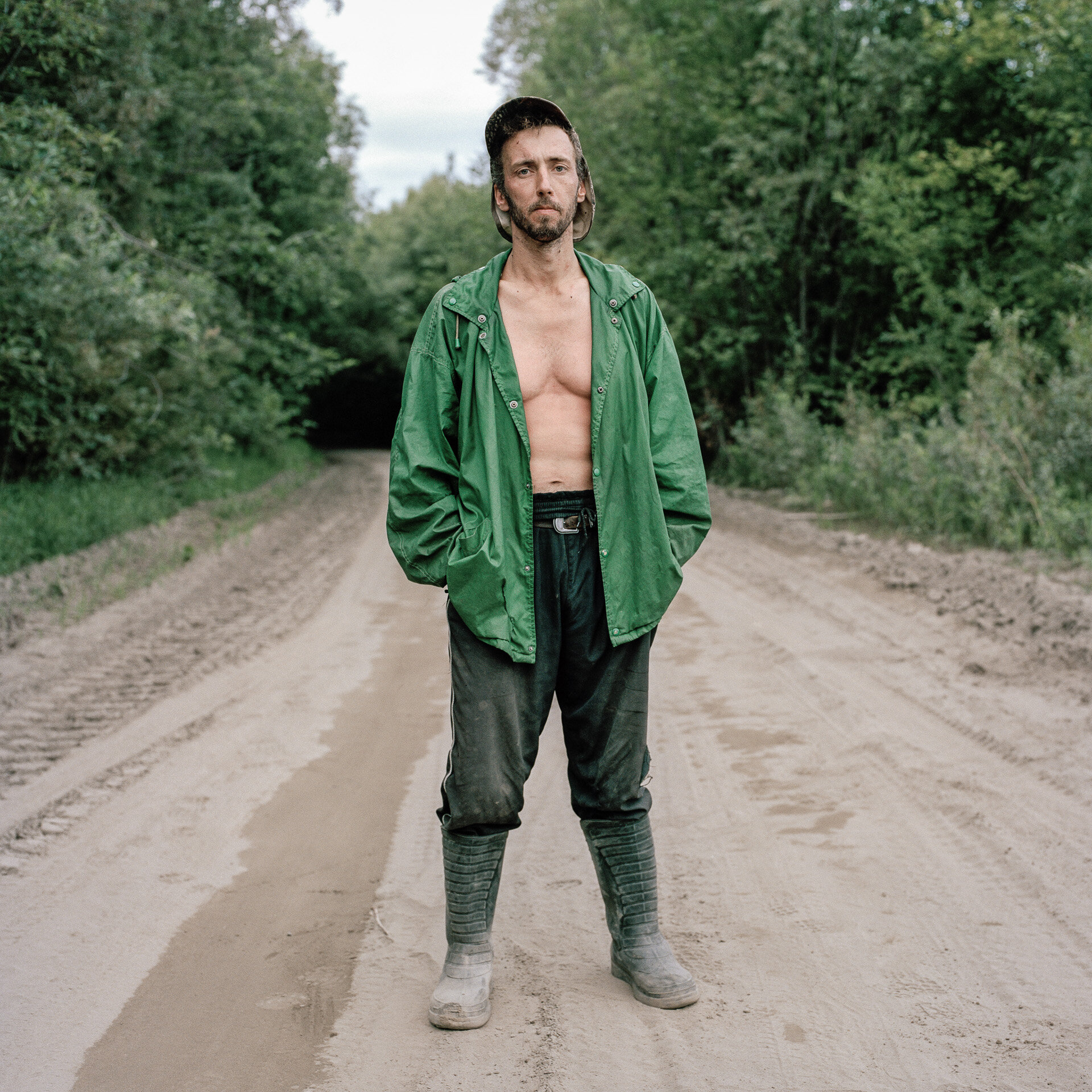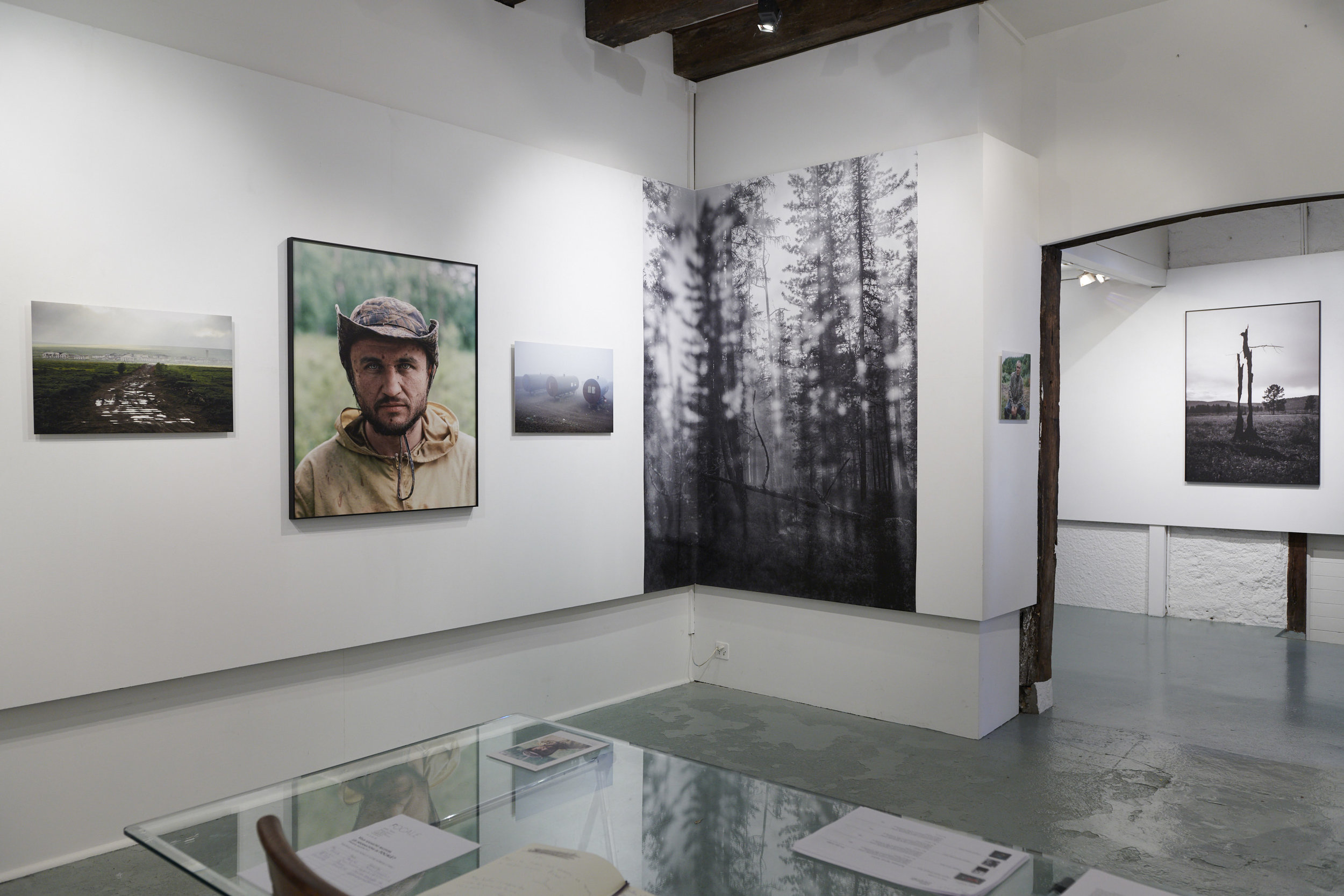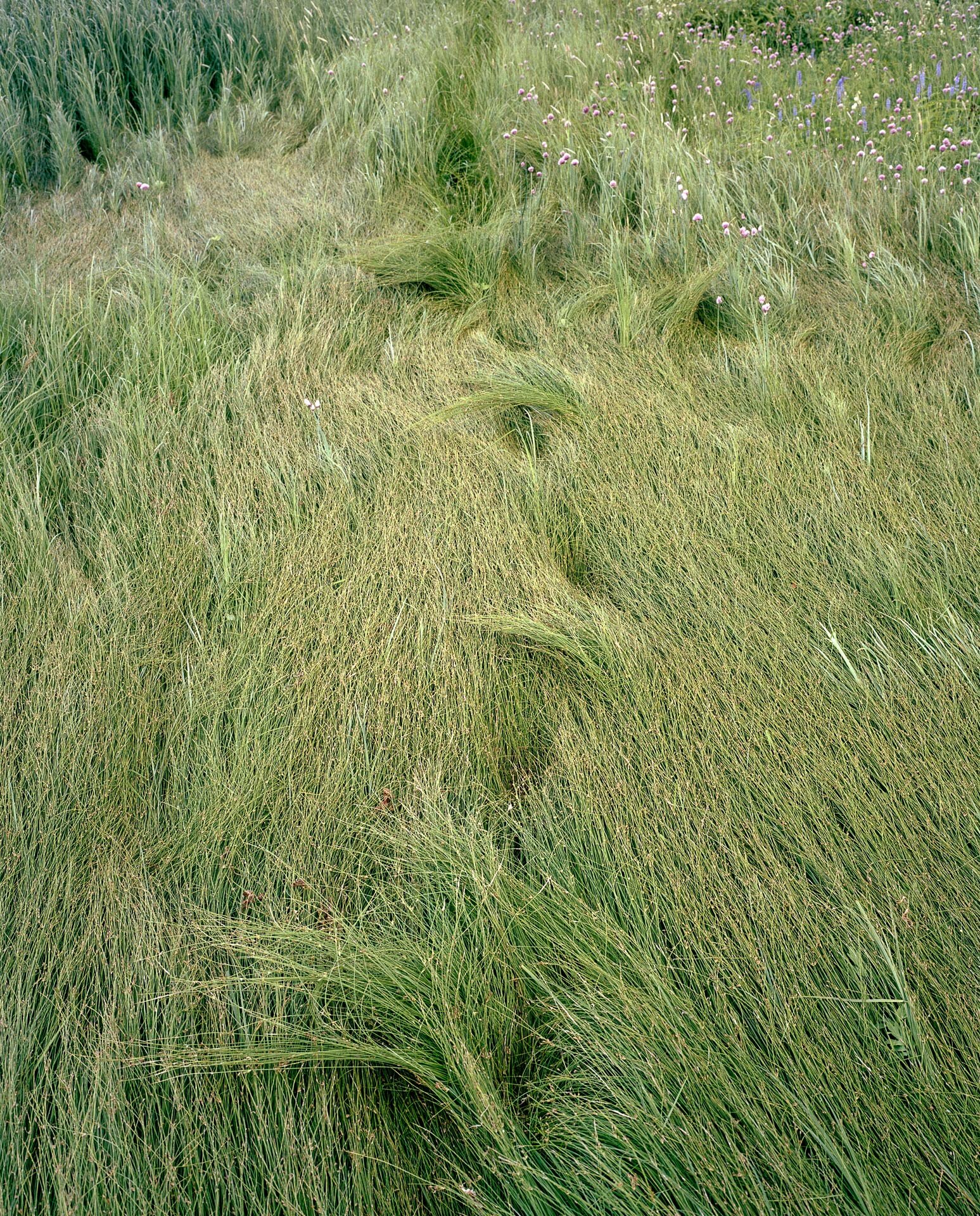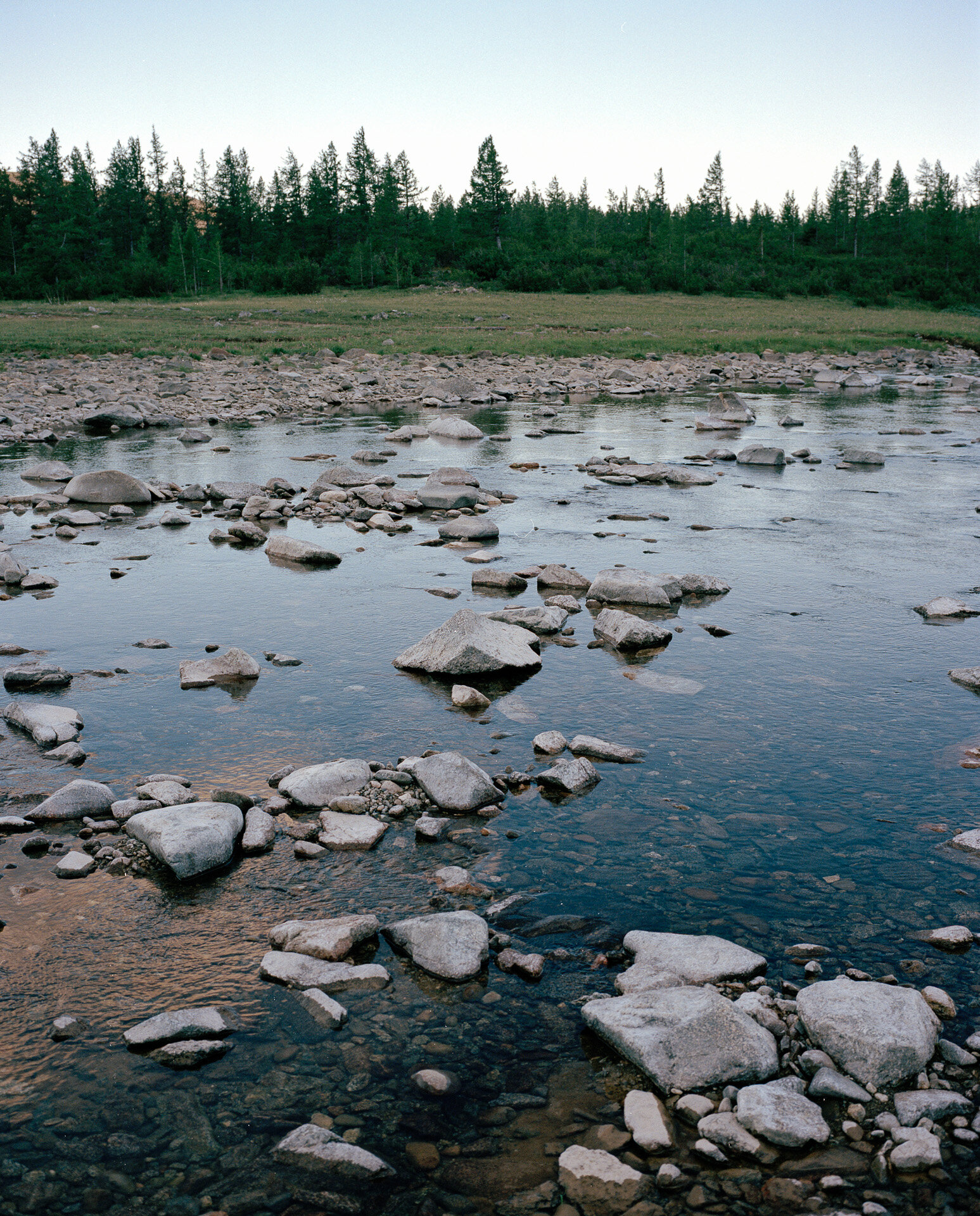L'Appel
L'Appel
Initiated in 2010, the work The Call was built around several trips made by the Swiss photographer in the wild territories of Russia, such as Siberia, Kamchatka and the Urals. Associating portraits, landscapes, and objects, without chronological and geographical markers being signified distinctly, The Call is less a work about Russia than a dive in the footsteps of a rough and precarious life, but full of a free dignity.
Rivers, taigas, tundras or volcanic peninsulas: the photographs aim to create the narrative of the journey of a group of characters through a hostile environment, with a river for guiding thread. Adopting the place of the observer involved, all at once located inside and outside of his subject, does the photographer report a form of freedom or imprisonment ? What part of resistance involves this way of life in rupture ? Is this isolation desired or sustained ? People seized by Yann Laubscher seem to be suspended in this ambiguity. They appear in the same movement present and absent in the world, physically strained by a resistant and almost animal beauty of their way of life, but intrinsically worked by a form of renunciation, abandonment. . Without seeking simplification or obeying any logic, the photographer structures a language rather than a style. Wide shot or close-up vision: each of his images is ruled above all by its own point of equilibrium.
Diane Dufour, director of LE BAL
Initiée en 2010, la série intitulée L’Appel s’est construite autour de plusieurs séjours effectués par le photographe suisse dans les territoires sauvages de la Russie, tels que la Sibérie, le Kamtchatka et l’Oural. Associant portraits, paysages, et objets, sans que les repères chronologiques et géographiques soient signifiés distinctement, L’Appel constitue moins un travail sur la Russie qu’une plongée sur les traces d’une vie rude et précaire, « mais pleine d’une libre dignité ».
Rivières, taïgas, toundras ou péninsules volcaniques : les photographies visent à créer le récit du cheminement d’un groupe de personnages à travers un milieu hostile, avec une rivière pour fil conducteur. Adoptant la place de l’observateur impliqué, tout à la fois situé à l’intérieur et à l’extérieur de son sujet, Laubscher rend-t-il compte d’une forme de liberté ou d’enfermement ? Quelle part de résistance implique ce mode de vie en rupture ? Cet isolement est-il souhaité ou subi ? Les individus saisis par Laubscher semblent suspendus dans cette ambiguïté. Ils apparaissent dans un même mouvement présent et absent au monde, physiquement tendus par la beauté résistante, presque animale, de leur mode de vie, mais intérieurement travaillés par une forme de renoncement, d’abandon. Sans rechercher la simplification ni obéir à une quelconque logique, Laubscher structure un langage plutôt qu’un style. Noir et blanc ou couleur, plan large ou vision rapprochée… : chacune de ses images est avant tout régie par son propre point d’équilibre.
Diane Dufour, directrice du BAL










